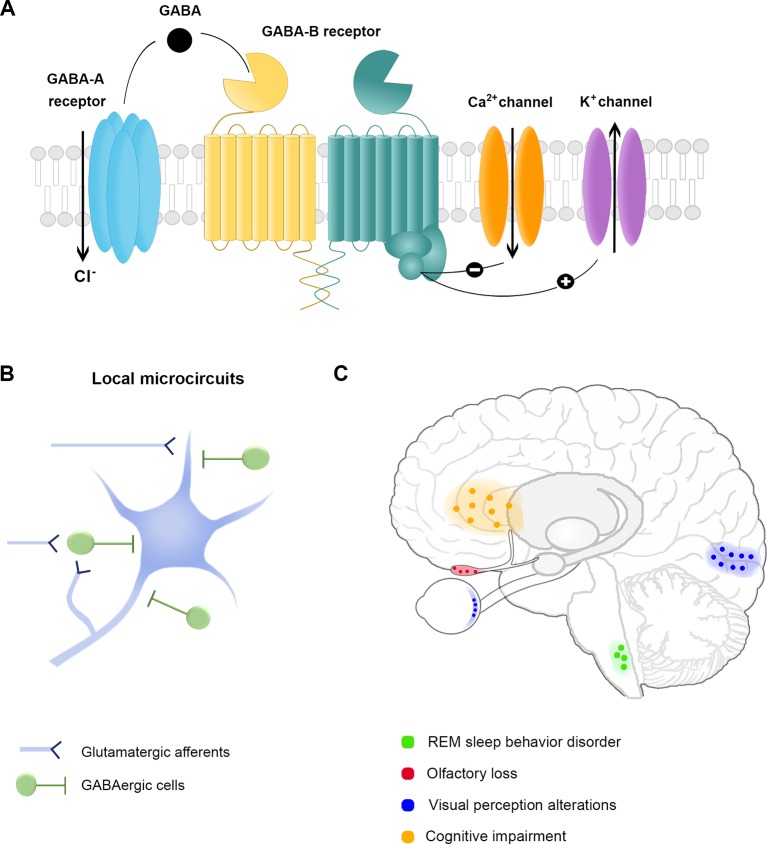Figure 1.
The GABAergic system and non-motor symptoms in Parkinson’s Disease. (A) GABA receptors. The inhibitory neurotransmitter GABA acts through ionotropic GABAA receptor or metabotropic GABAB receptor to reduce the membrane potential. The activation of GABAA receptors allows chloride (Cl-) entry into the cytoplasm, while GABAB receptor activation leads to a cellular cascade resulting in calcium (Ca2+) channel deactivation and potassium (K+) channel opening. (B) Schematic representation of cortical and subcortical local microcircuit organization of GABAergic cells. Inhibitory GABAergic cells are primarily local projecting neurons with a broad array of anatomical and physiological properties. The effect resulting from the inhibition exerted by GABAergic cells depends on their sensitivity to incoming stimuli, their firing properties and the subcellular domain of excitatory cells targeted by each interneuron. The diversity of GABAergic cells provides the brain with extensive computational power to regulate sensory and cognitive processes. (C) Brain areas associated with non-motor symptoms in Parkinson’s disease. Each color corresponds to a specific non-motor symptom and the associated area of the presumed GABAergic dysfunction.

